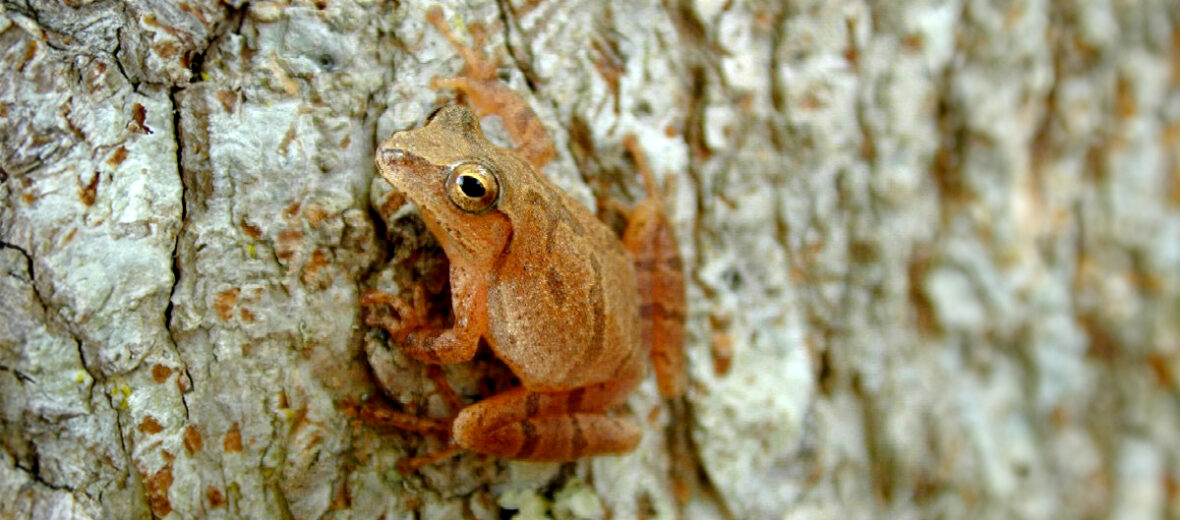
The spring peeper is a diminutive chorus frog species that is widespread throughout the eastern half of Canada and the United States. They prefer habitats with permanent ponds but can adapt to a wide range of habitats. These amphibians are unique in that their livers have the ability to flood their system with a glucose cryoprotectant that serves as both a kind of anti-freeze in their blood, and allows their organs such as their heart to enter into a state of protected dormancy. The spring peeper faces the threats of dams and water management practices which can alter their habitats. However, their abundant and stable population earns them the classification of Least Concern by the IUCN.
First the Stats…
Scientific name: Pseudacris crucifer
Weight: Up to .032 ounce
Length: Up to 1.38 inches
Lifespan: Up to 3 years
Now on to the Facts!
1.) These critters are named after their call, which rings in the start of spring.
2.) Their scientific name of Crucifer hails from the Latin root meaning “cross-bearing”. This could be in reference to the cross-like pattern on their dorsal side.
3.) Like all frogs, their calls are primarily produced to attract a mate.
4.) Rogue or satellite males will strategically place themselves near the loudest males in order to intercept an approaching female and win the chance at mating first.
5.) Temperature plays an important role in the volume and frequency of their calls. The warmer it is, the louder and more frequent they’ll call.
But wait, there’s more on the spring peeper!
6.) Due to their large toe pads, these tiny frogs were once thought to be members of the tree frog family. These toe pads help them navigate trees and bushes with ease, but they are more adept on the ground.
7.) Tadpoles feed on inorganic and organic matter such as algae and a variety of other organisms in the water. Whereas adults feed on ants, beetles, crickets, flies, and spiders.
Did you know…?
There are currently 2 subspecies recognized: the northern, (P. c. crucifer) and the southern (P. c. bartramiana). Although subspecies are not taxonomically accurate.
8.) Tadpoles are preyed on by diving beetles. Adults are preyed on by larger frogs, skunks, and snakes.
9.) Females lay upwards of 1,000 eggs in clusters of 2 – 3, under vegetation and/or debris at the water’s edge.
10.) Tadpoles drop from their eggs and metamorphose into adults in up to 3 months.
11.) Spring peepers are nocturnal (active at night).
Now a Short Spring Peeper Video!
Be sure to share & comment below! Also, check out the Critter Science YouTube channel. Videos added regularly!
Want to suggest a critter for me to write about? Let me know here.
Some source material acquired from: Wikipedia & IUCN
Photo credit: USGS



